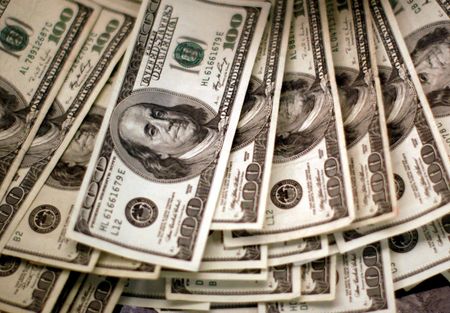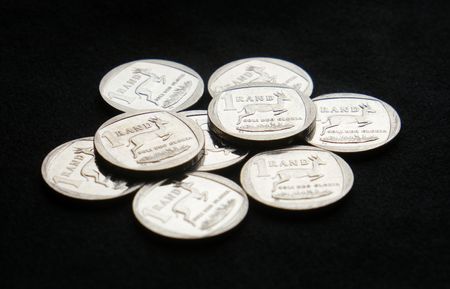By Rae Wee and Alun John
SINGAPORE/LONDON (Reuters) -World currency markets started the week in a cautious mood with the dollar nudging higher on the euro and yen, as traders fine tuned their positioning ahead of what could be a busy week with the long-awaited return of U.S. economic data.
Market reaction to U.S. President Donald Trump’s tariff U-turn on more than 200 food products was muted, with some analysts saying the move was not a surprise due to the cost-of-living issues caused by the levies.
The focus this week will be on U.S. data releases for clues on the health of the world’s largest economy, with the closely watched September nonfarm payrolls report due on Thursday.
Despite signs of further weakness in the U.S. economy from recent private-sector data, investors have trimmed expectations of a Fed cut next month, betting that gaps in economic data will delay or even derail further easing.
Markets are now pricing in just over a 40% chance of a 25-basis-point rate cut in December, down from more than 60% earlier this month.
And Goldman Sachs currency analysts cautioned in their week ahead note that while this week at least offers some data, it is not going to be the most helpful.
“Even though the shutdown has come to an end, it will naturally take some time for data to be relevant again. (Thursday’s) payrolls report for example will be a snapshot from two months ago, and therefore unlikely to settle any debates about the outlook,” they said.
In the medium term however, they think the incoming data will “show enough downside risks to the labor market to settle the swirling debate within the FOMC (the Fed’s rate setting committee)” – something that will be negative for the dollar.
Market moves ahead of that were fairly muted. The euro was down 0.16% on the dollar at $1.6033, while the yen was also softer at 154.78 to the U.S. currency.
YEN WATCH
The yen hardly reacted to data on Monday that showed Japan’s economy shrank an annualized 1.8% in the three months through September, as a drop in exports in the face of U.S. tariffs resulted in the first contraction in six quarters.
The Japanese currency does, however, remain near a nine-month low against the dollar, leaving traders alert to the threat of intervention from Japanese authorities to stem the yen’s decline.
Japan last intervened in the currency market in July 2024 when the yen fell to a 38-year low of around 161.96 to the dollar, as currency weakness stoked sharp food and fuel price inflation.
Sterling was steadier on Monday, up 0.1% on the dollar at $1.3190, though still near the top of mind for currency traders after British assets saw a whirlwind Friday session as speculation swirled around the British government’s highly anticipated November 26 budget.
This speculation is likely to continue, though the pound will also be influenced by British economic data this week, most notably monthly inflation data.
A cooler-than-expected inflation print for September sparked a shift in pricing for the Bank of England, and sent the pound lower, when it was released last month.
The safe-haven Swiss franc pulled back from a one-month high and last stood at 0.7951 per dollar, having found support last week from jitters over an ugly selloff in global stock markets. It was last at 0.9223 to the euro, just off a more than 10-year top hit last week.
(Reporting by Rae Wee; Editing by Muralikumar Anantharaman, William Maclean and Andrew Heavens)











